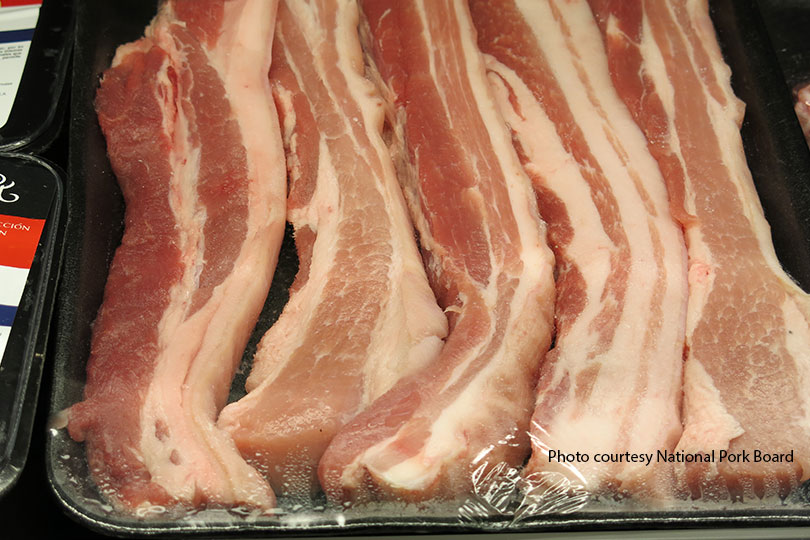By Jessica Domel
Multimedia Reporter
Without bacon, a BLT is just an LT. Breakfast would be, for most, less crispy. And 30 million Facebook posts wouldn’t exist.
Bacon has long been one of life’s pleasures, but could a pig disease in China mean less pork, and thus bacon, in the U.S.?
“I think we’ve been talking about this shortage, or this maybe expected, shortage for most of this year. In fact, we started talking about that back in the spring with fears of African swine fever (ASF) decimating the Chinese hog herd, and by all accounts, it has,” Dr. David Anderson, Texas A&M University professor and AgriLife Extension Service Livestock Marketing economist, said in an interview with the Texas Farm Bureau Radio Network.
China is the largest pork-consuming and producing nation in the world. But since August 2018, more than 1.17 million pigs in China have been culled due to ASF.
“There are estimates that they’ve lost somewhere between 25 to 50 percent of their sow herd,” Anderson said. “It’s decimated their herds.”
For most of this year, Chinese tariffs of more than 50 percent on U.S. pork kept sales low.
In September, China lifted its retaliatory tariffs on U.S. pork and resumed trade talks with the U.S.
Pork purchases surged.
“The last month we have data for was August. We exported 93 million pounds of pork to China that month,” Anderson said. “Last year in August, we exported 16 million pounds. That’s a huge change year-over-year. We exported even more in July.”
In July, the U.S. exported 108 million pounds of carcass weight pork to China. Last July, the U.S. only exported 18 million pounds to China.
So far, U.S. pork production has kept up with domestic and foreign demand.
“I think what we’re headed for more than anything is growing exports to China, growing U.S. pork production and a lot more volatility in prices,” Anderson said. “When it comes to pork bellies, for instance, we’re all concerned because it’s bacon, and we all love bacon on everything.”
The U.S. sends a variety of pork cuts to China, but traditionally, pork bellies haven’t been a top seller.
“Smithfield is a large pork producing company in the U.S. They have started exporting whole carcasses to China. So that includes the belly,” Anderson said.
JBS announced in October they will no longer use ractopamine, a feed additive, which has kept some supplies of U.S. pork out of China in the past.
“That allows all of that pork to be exported to China, because they don’t allow ractopamine in their imports. It frees up some more supplies to go that way,” Anderson said. “I think we are headed for a higher level of hog prices, a higher level of pork prices, and a heck of a lot of volatility in the prices that we see over the coming year.”
In October, there were just over 600 million pounds of pork in cold storage in the U.S. That’s up about 20 million pounds over September.
While the U.S. has ramped up pork production and has plenty of supplies, it would still not be enough to make up for the lost production in China.
“If we take this loss of half of their pork, half of their hogs, there is, by some accounts, not enough pork available in the rest of the world to fill those needs if they were going to consume the same amount,” Anderson said.
ASF, and the dwindling pork supply in China, have caused pork prices to rise in China.
That’s caused Chinese consumers to eat less pork and turn to other proteins.
“I don’t think we are going to see a shortage,” Anderson said. “If the Chinese really keep coming to us to buy even more pork, then we could get higher prices. On balance, we have this short-term reality of large production and some longer-term expectations of higher prices in the future.”
The increased exports could mean better prices for U.S. pork producers who lost, on average, $8 a head during the trade war with China.
“It allows a hog farmer to profit and produce more of it that yields lower prices in the future,” Anderson said. “We always have this balancing act.”
The president announced in mid-October an agreement in principle with China that includes Chinese purchases of up to $50 billion in U.S. agricultural goods per year.
But despite the increased purchases and deal, U.S. pork sales to China remain below the $489 million in pork shipped in 2017.

